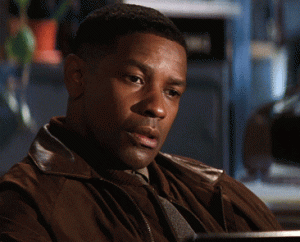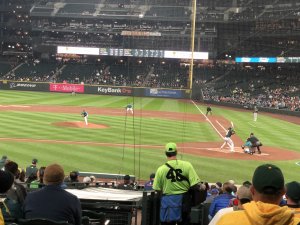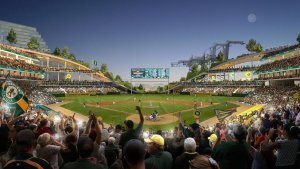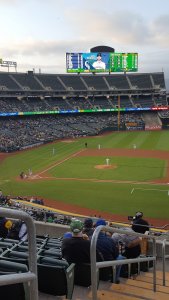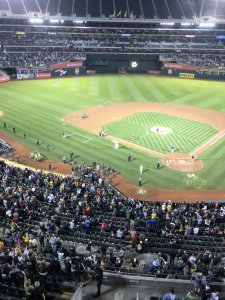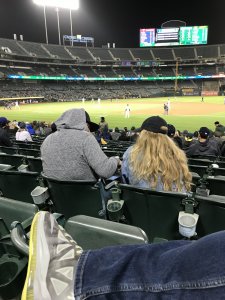Q&A: David Forst, Assistant General Manager, Oakland Athletics
by Eno Sarris - December 11, 2014
David Forst was appointed to his current position in February of 2004 after serving as an assistant to the general manager and coordinator of professional scouting for the Oakland Athletics. His primary duties include assisting Billy Beane in all player acquisitions, contract negotiations and player evaluations. He agreed to sit down and talk at baseball’s Winter Meetings in San Diego, California.
Eno Sarris: A lot of people are asking: What are the Athletics doing? Here’s a different version: Was there a plan for the offseason, was there an overarching idea, or is it always just “Get better, piece by piece”?
David Forst: There’s definitely a plan. We certainly spend the first couple of weeks after the year, when the season ends, talking on a macro level about what direction we should go. The specifics of who to trade and who to target don’t necessarily come into focus until a little bit later in the offseason, but certainly the plan is talked about immediately. And frankly, it was probably something we talked about in September, before the season was over.
I think Billy [Beane, General Manager] has articulated in a couple of places that we knew that just bringing back the current team, assuming the losses of [Jon] Lester, and [Luke] Gregerson, and [Jed] Lowrie and some of those guys that we didn’t have an opportunity to sign — bringing back that team wasn’t going to work. The Angels were obviously 11 games better than us and the Mariners were right on our tail, and poised to get better. Just bringing back our group and just supplementing it with little pieces, wasn’t going to give us a chance to compete, and was also going to leave us further down the path of having an older, more injury-prone club, frankly.
We decided very early on that we needed to take a similar route that we did in 2011, in November in December, and work hard on increasing our depth, getting younger and getting healthier.
Sarris: With the exception of Franklin Barreto, it seems like a lot of these guys could start or play in the major leagues very soon, if not this year. It’s almost more of a small step back and not a total rebuild, the dreaded R word.
Forst: Right. That total rebuild is not something we really believe in, and not something Billy or I want to do. It’s not enjoyable to sit through six months of a season and lose 95-100 a games. Luckily, I’ve never had to do it. Billy had to do it a little bit in the early 90s.
That’s certainly by design. If you look at the guys that we got the last time we did this: [Derek] Norris, [Tom] Milone, [Josh] Reddick, [Brad] Peacock — that group was similarly made up of upper-level guys that we thought would contribute for us in 2012 and beyond. And that’s how it worked out. So when you look at — obviously [Brett] Lawrie is the guy that has had the most major league time — but [Marcus] Semien, and [Chris] Bassitt, and [Kendall] Graveman, and [Sean] Nolin, all of these guys have had a little taste but a lot of success in Double-A and Triple-A. It’s totally reasonable to see them contributing to a good 2015 A’s team.
Sarris: If people are worried that maybe the return for Brandon Moss seemed a little light, are they missing something that you really like about Joey Wendle, or was the market a little bit softer than you expected? What might they be missing about that trade?
Forst: It’s probably how much we really like Joey Wendle and how good our reports were and the things he’s done in Double-A that make us think he can play in the big leagues before the end of this year. You’ve heard a lot since the trade about the makeup, and we think we know him pretty well.
I don’t think it’s a reflection on Brandon or our feelings about him. I think this was a guy we really liked. To be really honest, when we target a player and know that’s what we want, we can be pretty singularly focused on them.
[I asked Billy Beane about Joey Wendle later that afternoon, pointing out that he was old ("That's not his fault" said the general manager) and that he lacked a standout tool ("But he is above-average across the board.")]
Sarris: Is a position-switch possibly in the future for Rangel Ravelo? Are you thinking about him at third base at all?
Forst: Yeah, we are. I mean he’s played there some. Obviously he’s played mostly first base but we’ve seen enough of him — our scouts have seen enough of him — at third base that we think that it’s still a possibility, and I know that he wants to do it.
Sarris: That can change a lot of how you look at these trades. You’re talking about second baseman, a third baseman, a shortstop.
Forst: I’m not definitively saying that Ravelo is going to do it, but it’s something we are going to try, and it’s a possibility down the road.
Sarris: Our projections just came out for next year.
Forst: I saw that.
Sarris: You’re still right there. Above five hundred, four, five games back. You were talking about 11 games last year, but it doesn’t work that way. Last year’s last year. And you’re not done yet.
Forst: Exactly.
Sarris: It’s really interesting that made all these moves and you’re still a move or two away.
Forst: And we have no mandate for cutting payroll. Between [Jeff] Samardzija and Moss and [Josh] Donaldson, you’re looking at a projected $20 million in arbitration salaries. We have that money to use if the right thing comes up. And that may be in December, that may be in February, it may be at the trade deadline, but we do have that money at our disposal. I hate to keep referring back to 2011-2012, but we did sign Yoenis Cespedes in February that year, adding $9 million to our payroll at a late time, when frankly I think we had an advantage because everyone had used up their payroll. I’m not here to say that guy is out there again in February, but it does give us some flexibility in the coming months.
Sarris: You traded away a lot of power.
Forst: Yeah we did.
Sarris: When you’re looking at what you’re going to do for this year, do you think about a category need, or more of a positional need? What are you looking at right now?
Forst: It’s interesting the way you put it, ‘category’ need. We don’t really look at it that way. Look, homers are great, everyone wants homers, and it’s been a big part of our success the last few years, but it’s not something where we need this many homers, or this many guys with 20+. A lot has been made on your site about the fly ball tendencies of our team the last few years and frankly that’s not something that we went out to focus on.
Sarris: You didn’t see that as an undervalued asset that you might be able to take advantage of?
Forst: We didn’t. I think there’s something that those hitters have in common that attracts us to them, but specifically going out to look at fly ball hitters was not something we did. As it relates to home runs, we’re aware of it, and starting with Yoenis and Donaldson and Moss, we recognize that as something we’re going to be lacking until we add more guys. But we don’t need to go get homers, we need good hitters.
Sarris: A while back, Bill Petti showed how difficult it is to win in extreme ball parks. For y’all, it doesn’t play as extreme as a lot of parks, but for offense — if you’re looking right now at talking to a free agent position player… is it ever difficult?
Forst: It is. Absolutely. And not just the dimensions of the ballpark obviously. The other limitations we have with the facility, whether it’s the small clubhouse, whether it’s the perception that there’s constantly sewage in our bathrooms… there are things that are difficult. We have a lot easier conversations with pitchers than we do with position players because pitchers want to pitch for us. The combination of the foul ground, our usually very-solid defense, and the fact that at night, the ball just doesn’t carry. Pitchers want to come here. It’s always been more difficult with position players. Part of our sell to Yoenis was that he didn’t know any different. So it was easier to get him. But we signed Billy Butler and he’s confident enough that he’s going to be able to hit in our park. It’s something we deal with.
Sarris: I’ve been looking at some research recently that suggests that we penalize DHs too much, that maybe DHing is a skill. We know that there’s a penalty for coming off the bench, pinch-hitting — you’re not as good as you are if you’re playing in the game. It seems to follow that if someone has demonstrated the ability to DH, it becomes valuable. They’ve managed to do it despite the penalty. Was that a little of what attracted you to Billy?
Forst: Yeah, no doubt. I wish we could quantify it. Because in conversations with players, you absolutely hear from players that they don’t like DHing and they like being in the flow of the game. There are guys — whether their numbers reflect it or not — say they are worse as the designated hitter, just because that’s how they feel.
Sarris: Brandon even told me that it was harder for him to hit when he was in the outfield than when he was at first base.
Forst: A guy like that, that is absolutely invested in being part of the game, and with Brandon specifically, didn’t really know what to do with himself for the two hours and 45 minutes that he wasn’t playing. You hear that a lot. I remember the best guy that we’ve had DHing was Frank [Thomas] in 2006. He had done it so much and he had such a plan for how his time from seven to ten was laid out and he rode the bike and he would come up and watch video and not everyone has that skill.
Sarris: Back to the park for a second. Is there any danger of thinking about your team in a certain park and then is there any risk they aren’t going to be in that park?
Forst: In our case, there’s not. A couple of years ago, I would have told you that yes, we were potentially looking at having a team in the Coliseum and that team in San Jose. But we never have more than a two- or three-year plan, it’s not realistic to have a five-year plan. The potential of a new stadium is so far off that it’s not something we consider.
Sarris: You’ve had a lot of player movement this year. Recently, Tony Blengino wondered out loud if it’s harder for players to buy into the greater good of the team when there is so much movement. When anyone could go at any time. Is that something you think about?
Forst: I can’t say that I’ve experienced that in conversation with players, that they have a hard time buying in. As long as they are in Oakland, they feel like they are one of the guys. Right up until they get that phone call from me or Billy that they are going somewhere else, they feel like an important part of it. Bob [Melvin] does such a great job of including everybody and communicating what everybody’s role is that I think that’s part of what makes this work, or what has made this work over the last few years. Guys feel like they are a big part of what we are doing.
Sarris: For what it’s worth, I’ve been in that clubhouse a fair amount and I agree — also you have a lot of guys that weren’t necessarily highly-valued by the marketplace. A lot of those guys are super appreciative.
Forst: I think that’s the right word. I talked to Brandon the other day when we made the trade. And he was very appreciative, and he’s a good guy, and I wouldn’t have expected any different, but it was genuine — he said that I’m not where I am today without the opportunity we gave him. To which I said, look you coming up in 2012 was the fulcrum that changed the momentum of our last three years, so the feeling is mutual. I think there is a sense with a lot of guys in our clubhouse that this an opportunity that they might not have gotten elsewhere and I think as far it goes a long way to quote-unquote buy in.
Sarris: The elephant left in the room is the postseason record. There’s the funny Billy quote on it. But from what I’ve seen in the numbers, I’ve tried to look at this question, is the game different in the postseason. If you talk intuitively, you can say depth matters a little less (and the A’s have always been a team with great depth), stars can rise to the occasion.. but in the numbers, it’s hard to show. It’s still the same game.
Forst: The game is the same. What’s different is that building a 25-man roster for 162 games is a completely different process than building your roster for a one-game playoff or a five-game or seven-game playoff. And the example was pretty stark this year when you talk about the relievers for the Royals throwing 45% of their innings or something. That’s a different game than what we play during the season. And Washington had by far the best 1-5 rotation in the game, the biggest gap between them and the next team in the league, and they didn’t get to play it out in a short series. They didn’t get to play to their strengths because they never got to their fourth and fifth starters.
While the game for three hours between the lines is the same, it is a very different process putting the roster together for 162 games and I think we’ve done that well the last three years. It doesn’t look like it’s translated, but a break here or there and the narrative might be completely different. We were in a situation this year where the guy we traded for was starting a one-game playoff and he had two leads, our closer had a lead, but the ball didn’t bounce our way. But it very easily could have been a very different narrative.









